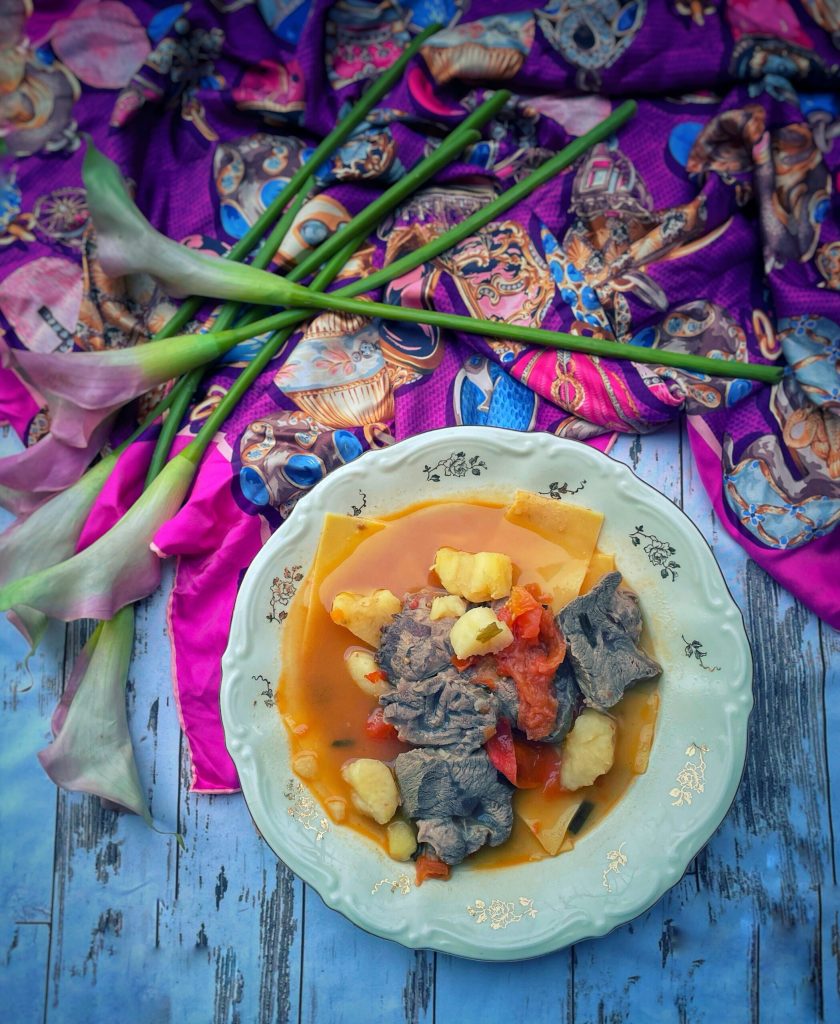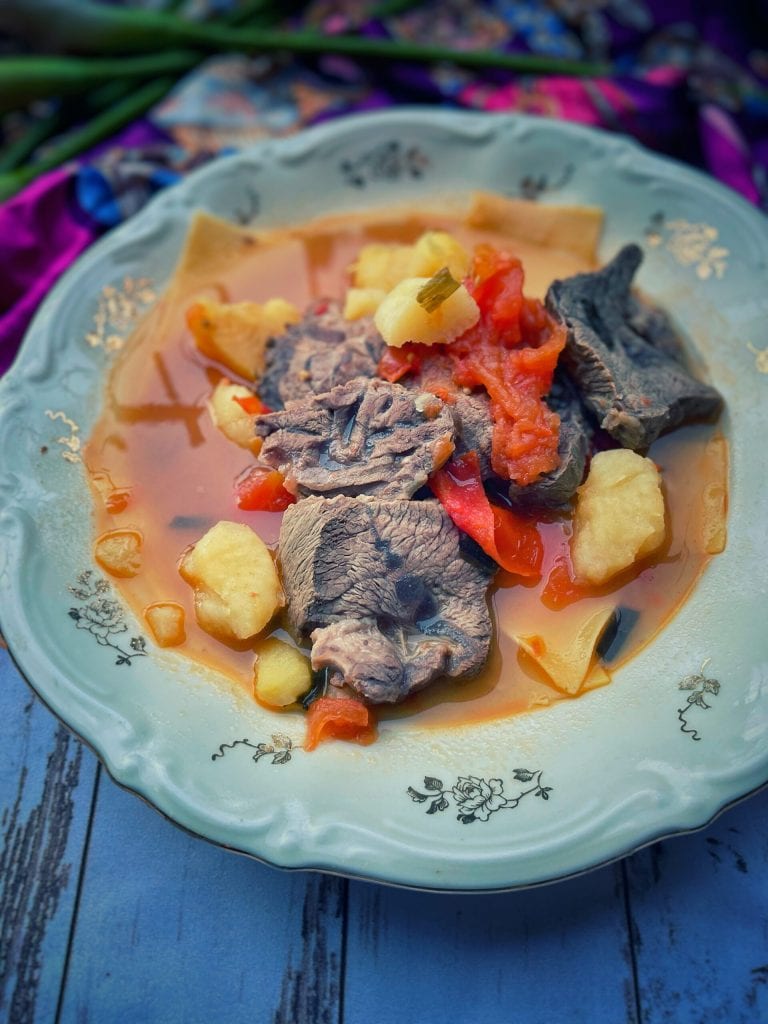Shilpildoq (or Shilpildak) originates from the rural culinary tradition of Uzbekistan and more generally from the Fergana Valley region, an agricultural and densely populated area that also extends into Kyrgyzstan and Tajikistan.
It combines the tradition of homemade pasta, which is cooked separately and served with a rich stew of meat and vegetables.
A popular dish among farming families, where pasta production and the use of local ingredients like meat, potatoes, and onions were (and are) the norm.
This is a communal dish, created as a shared meal designed to feed many people with simple but nourishing ingredients.
Like other dishes from Central Asia, it combines the Persian tradition of stews with the nomadic tradition of pasta, cooked separately and served with toppings.
An alternative to plov and laghman: it is considered a midpoint between hand-stretched pasta (laghman) and more common rice dishes (like plov).
The onomatopoeic name “Shilpildoq” evokes the sound of boiling water or cooking pasta — an affectionate and popular name often used in domestic contexts.
It was (and is) typical of the cold seasons, due to its rich caloric content and the ease of sourcing ingredients.

- Difficulty: Easy
- Cost: Economical
- Preparation time: 10 Minutes
- Portions: 6 People
- Cooking methods: Boiling
- Cuisine: Asian
- Seasonality: Autumn, Winter, All seasons
Ingredients
- 3.3 lbs flour
- 2 eggs
- 1 tbsp salt
- 1.1 lbs beef or lamb (whole piece)
- 2 onions
- 2 tomatoes
- 3 potatoes
- 1 carrot
- 4 cloves garlic
- 0.42 cups vegetable oil
- to taste cumin
- to taste salt
Steps
Prepare the pasta:
Dissolve 1 tablespoon of salt in 1 cup of water.
In a large bowl, pour the flour, add the eggs and the salted water.
Knead until you obtain a smooth and homogeneous dough.
Cover the dough and let it rest.
Prepare the stew:
Dice all the ingredients.
In a large pot, heat the oil and sauté the onions until golden.
Add the meat and brown until it changes color.
Add the tomatoes, potatoes, carrot, and garlic.
Season with salt and cumin.
Add water to cover the ingredients.
Bring to a boil, then cook over medium heat for 15–20 minutes.
Cook the pasta:
Roll out the dough to a thickness of 0.08–0.12 inches.
Cut into squares about 3×3 inches.
Cook the pasta squares in the meat cooking broth.
Drain and arrange on a serving platter.
Assemble the dish:
Pour the hot stew over the cooked pasta.
Serve immediately.
FAQ
Are there regional variations of Shilpildoq?
Yes, there are regional variations of Shilpildoq in Central Asia, especially in Kyrgyzstan, Uzbekistan, Tajikistan, and Kazakhstan, where the same basic dish (a stew of potatoes, meat, and spices) may have slightly different names or be adapted with typical local ingredients.
Here are some possible variants or related dishes:
Dimlama (Uzbekistan): very similar, but includes more vegetables like eggplants, peppers, cabbage, and tomatoes.
Tushpara Shurbo (Kazakhstan): if it contains dumplings or small ravioli in broth with potatoes and meat.
Shurbo or Shurpa: thick stews or dense soups with meat and vegetables, in which some versions resemble Shilpildoq.
In some rural areas, it may simply be called “Etli Kartoshka” (meat with potatoes) or with local dialect names, but the concept remains the same.
Shilpildoq is often seen as a homemade and popular dish, so it can vary greatly from family to family.Is Beshbarmak another name for Shilpildoq?
No, Beshbarmak (“five fingers” in Kazakh/Kyrgyz) is not another name for Shilpildoq, but a different dish.
Beshbarmak is the national dish of Kazakhstan and Kyrgyzstan: it is made with boiled meat (often horse or mutton), served on fresh handmade pasta like wide noodles, with broth and stewed onions. It is traditionally eaten with hands (hence the name).
They are both typical Central Asian dishes but differ in structure, ingredients, and cultural context.

